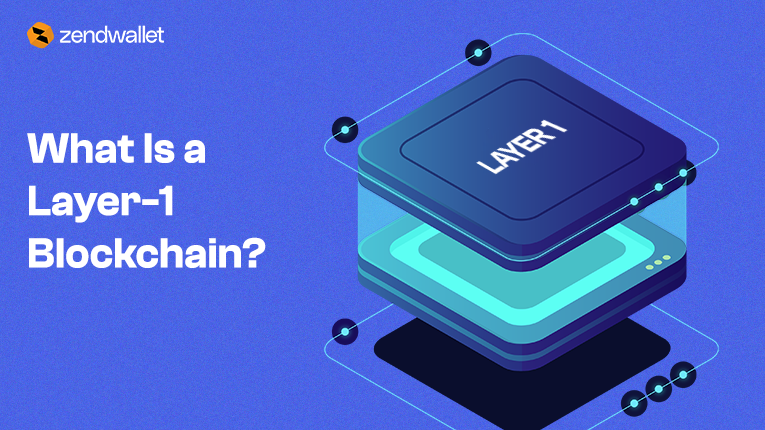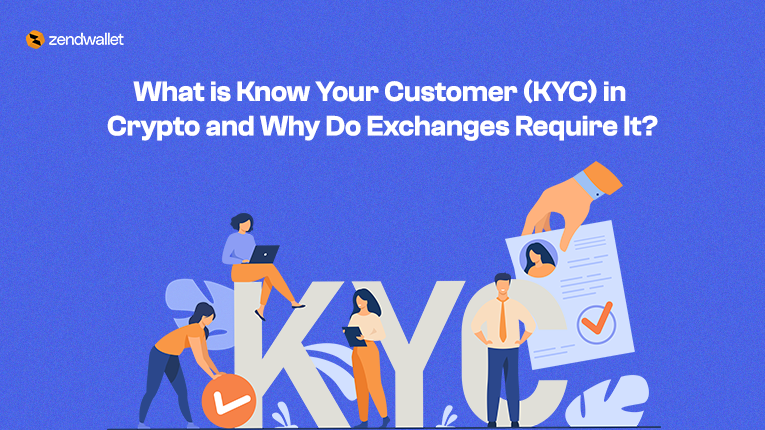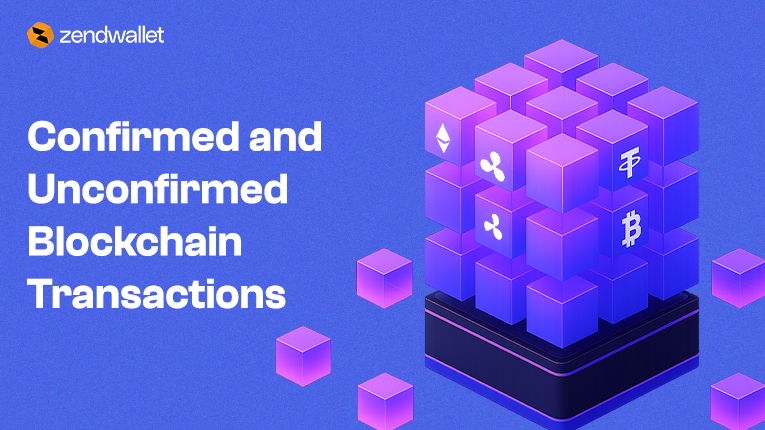What is a Layer-1 blockchain? Layer-1 blockchain is the base layer of a blockchain network.
It is the main chain where transactions are validated, recorded, and secured.
Well-known examples include Bitcoin, Ethereum, Solana, BNB Chain, and MultiversX.
Each of these networks operates independently, follows its own rules, and uses its native cryptocurrency to power activity on the chain.
This guide breaks down what a Layer-1 blockchain is, how it works, the challenges it faces, the improvements developers introduce to strengthen it, and how Layer-1 networks compare with Layer-2 systems.
You will also learn how everyday users benefit from our apps, ZendWallet, which allows easy deposit, withdrawal, and swapping across Layer-1 networks without dealing with technical complexity.
What Is a Layer-1 Blockchain?
A Layer-1 blockchain, often referred to as L1, is a standalone blockchain that handles all aspects of the network’s activity on its main chain. It performs several key functions.
It validates and processes every transaction from start to finish.
It maintains the full ledger that stores all transaction history.
It executes smart contracts where applications run.
It provides security and decentralization by allowing many participants to verify activity.
It uses a native cryptocurrency to pay transaction fees and maintain the network.
Examples include Ethereum using ETH, Bitcoin using BTC, and Solana using SOL.
Because all activity moves through one main chain, Layer-1 networks deliver strong security and decentralization.
They also experience congestion when usage increases, which slows down the network during busy periods.
You can also read: How Blockchain Technology Works: A Step-by-Step Guide
Why Layer-1 Blockchains Experience Slower Speeds
Layer-1 networks process everything directly on-chain. Every validator must verify and store each transaction before a new block is added.
This design strengthens the network’s security but also limits how many transactions can pass through at once.
For comparison, Visa processes around 1,700 transactions per second, while Ethereum processes about 15 transactions per second and Bitcoin averages between four and seven.
This gap exists because Layer-1 networks prioritize accuracy, openness, and validation across many independent participants.
This challenge is linked to the concept known as the Blockchain Trilemma, introduced by Ethereum co-founder Vitalik Buterin.
The Blockchain Trilemma
The Blockchain Trilemma explains how a blockchain seeks to balance three essential elements.
Decentralization ensures that the network operates through many independent nodes.
Security protects the blockchain against attacks, fraud, and manipulation.
Scalability allows the network to handle large numbers of transactions smoothly.
Most Layer-1 networks excel in decentralization and security because these are core values of public blockchains. Scalability requires more advanced techniques, which developers continually improve.
Layer-1 Scaling Improvements
To strengthen performance, Layer-1 blockchains introduce upgrades that help increase transaction speed, reduce congestion, or improve efficiency.
These techniques enhance the network while preserving its secure and decentralized structure.
Changing the Consensus Mechanism
Consensus determines how participants in the network agree on which transactions are valid. Bitcoin uses Proof of Work, which is extremely secure but requires significant time and energy.
Modern Layer-1 networks such as Ethereum, Solana, and BNB Chain use Proof of Stake, a more efficient mechanism that allows higher throughput and faster confirmation times.
Adopting a new consensus model often requires deep technical updates across the network.
Increasing Block Size
A larger block can contain more transactions, which helps clear congestion during busy periods. Bigger blocks also require more bandwidth and processing power from participants, so the network must balance size with reliability.
When blocks grow too large, nodes take longer to sync and broadcast data, which can reduce overall efficiency.
This method improves capacity but works best when combined with other upgrades.
Segregated Witness (SegWit)
SegWit separates signature data from the main transaction data. This adjustment increases the effective capacity of each block without expanding the block size.
It lowers transaction fees and strengthens protection against certain integrity issues.
SegWit improves network efficiency in a clean and lightweight way that continues to benefit Bitcoin and similar networks.
Layer-1 Sharding
Sharding divides the blockchain into multiple segments called shards.
Each shard processes its own set of transactions in parallel, creating a highly productive system that is similar to multiple teams working on tasks simultaneously.
Sharding improves speed, reduces congestion, and allows a network to scale as usage grows.
This method requires careful coordination among shards to maintain security and consistency.
Layer-1 and Layer-2 Blockchains
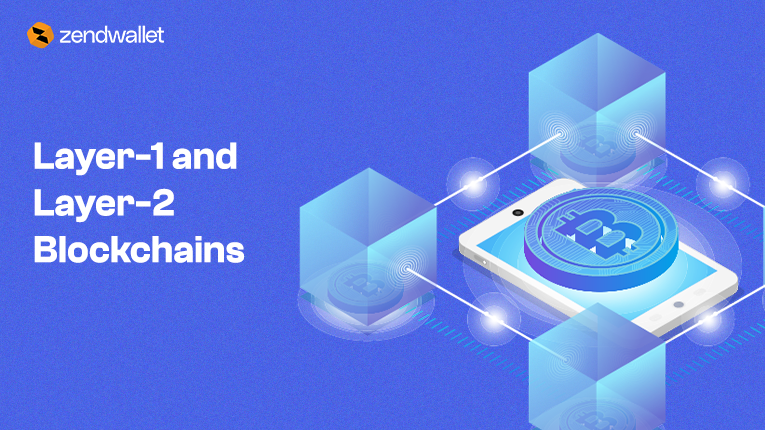
When Layer-1 improvements reach their limit, developers introduce Layer-2 systems to support the base chain. Layer-2 networks improve speed and reduce costs while still relying on Layer-1 networks for settlement and security.
Layer-1 blockchains handle consensus, security, and settlement. They provide a strong backbone for decentralized systems.
Layer-2 blockchains operate on top of Layer-1. They process activity off-chain and send summarized results back to the main network. This design creates faster and more affordable transactions.
Examples include the Lightning Network for Bitcoin and rollups for Ethereum. Layer-1 provides the foundation, while Layer-2 adds speed and efficiency.
Examples of Layer-1 Blockchains
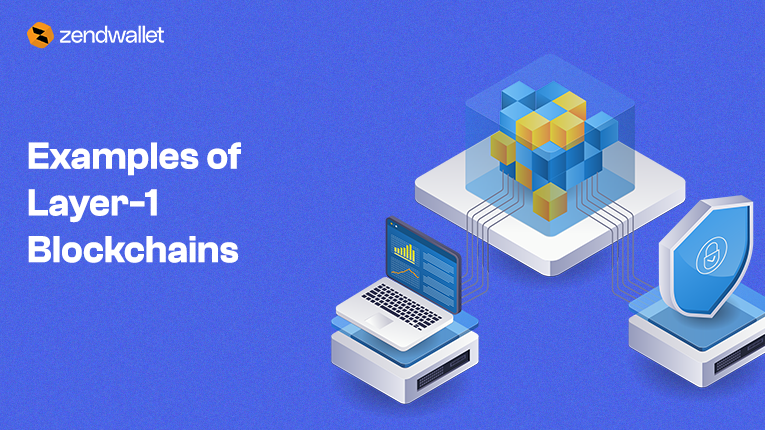
Bitcoin (BTC)
A pioneer in the blockchain industry, known for outstanding security and decentralization. It focuses on serving as a reliable digital currency with a strong settlement layer.
You can read: How Bitcoin Investment Works
Ethereum (ETH)
A programmable Layer-1 blockchain that supports smart contracts, decentralized applications, decentralized finance, NFTs, and more. It now operates on Proof of Stake, offering improved performance.
You can read: Where to Buy Ethereum (ETH)
Solana (SOL)
A high-performance Layer-1 blockchain that uses a unique technique called Proof of History. It supports very fast transactions and extremely low fees.
You can read: How to Buy and Send Solana to Your Phantom Wallet Using ZendWallet
BNB Chain
A Layer-1 blockchain designed for fast processing and user applications. It uses Proof of Staked Authority to support smart contracts and large-scale activity.
You can read: How to Get BNB Token ID and Password on ZendWallet
MultiversX (Elrond)
A highly scalable Layer-1 network that uses adaptive state sharding for impressive throughput and performance.
THORChain
A Layer-1 blockchain that supports cross-chain swaps without requiring wrapped assets. It enables seamless movement between different cryptocurrencies.
Kava
A Layer-1 blockchain that blends Ethereum smart-contract support with the interoperability features of Cosmos, creating a flexible multi-chain environment.
How ZendWallet Makes Layer-1 Blockchains Easy for You
Our platform, ZendWallet, gives Africans a simple, fast, and safe way to use Layer-1 blockchains.
With ZendWallet, you can:
- Deposit crypto quickly – add popular assets like BTC, ETH, or SOL without dealing with complex blockchain steps.
- Withdraw funds easily – move crypto to your bank account or mobile money once blockchain confirmations are complete.
- Swap assets smoothly – convert between cryptocurrencies like USDT and USDC quickly, without tricky exchange processes.
ZendWallet takes care of the technical side of blockchain for you, showing everything in a clear and userfriendly interface. This makes it simple to track, manage, and use your digital assets safely.
Our platform brings the power of Layer-1 networks directly to your hands, making digital finance easy and accessible across Africa.
Frequently Asked Questions
What is a Layer-2 blockchain?
A Layer-2 blockchain operates on top of a Layer-1 network, handling transactions off-chain to reduce congestion and fees, then reporting back to Layer-1.
Is Solana a Layer-1 or Layer-2?
Solana is a Layer-1 blockchain designed for fast, low-cost transactions using Proof of History.
What is the best Layer-1 blockchain?
There is no single “best” Layer-1 blockchain. It depends on use case. Bitcoin is great for secure payments, Ethereum for dApps and DeFi, Solana for speed and low fees.
What is the difference between Layer-1 and Layer-2 blockchain?
Layer-1 is the base network that validates and secures transactions. Layer-2 operates on top of Layer-1 to improve speed and reduce costs, without compromising security.
Getting Started With Layer-1 Blockchains
Layer-1 blockchains form the core of the global crypto ecosystem. They provide secure settlement, strong decentralization, and a reliable foundation for applications, assets, and innovation.
As more people and businesses use blockchain technology, Layer-1 networks continue to evolve with new consensus models, sharding techniques, parallel execution, and enhanced infrastructure.
Understanding Layer-1 blockchains opens up new ways to use crypto. Platforms like ZendWallet make it easy to manage your digital assets without worrying about technical blockchain details.
You can deposit, withdraw, and swap cryptocurrencies on multiple Layer-1 networks safely and quickly. Start exploring and see how simple blockchain can be.
